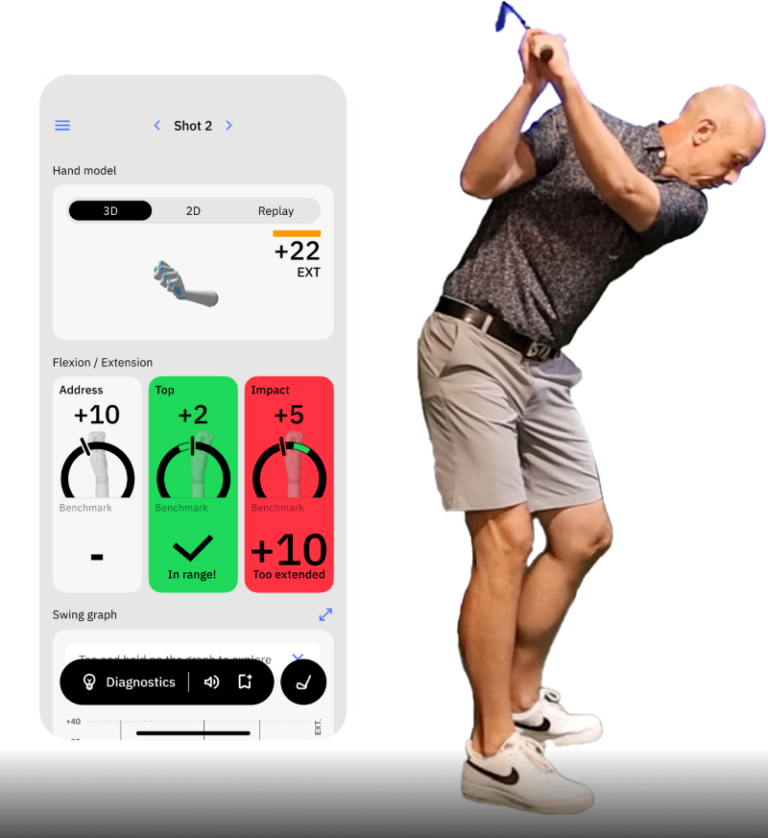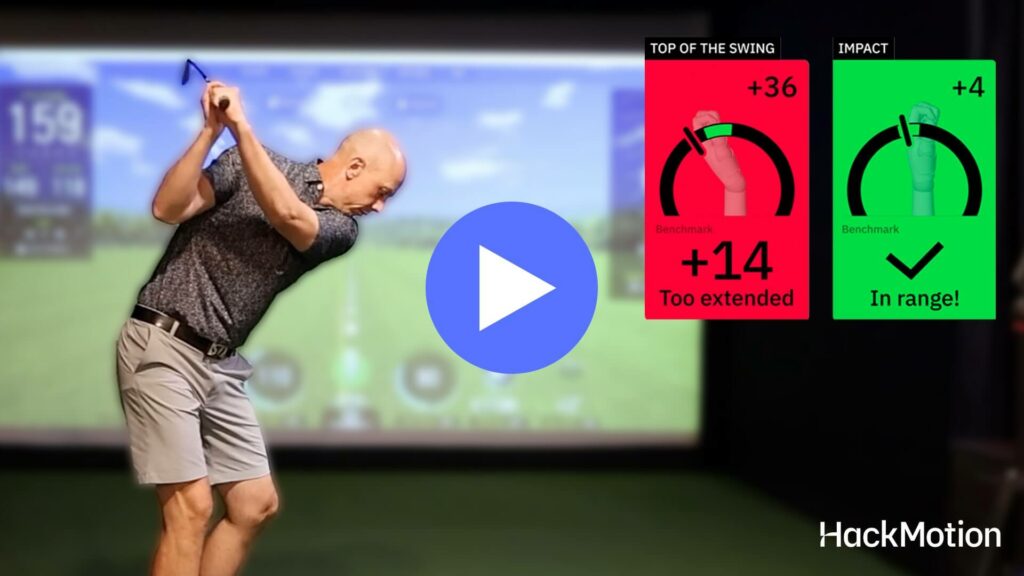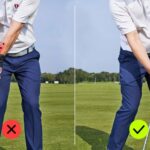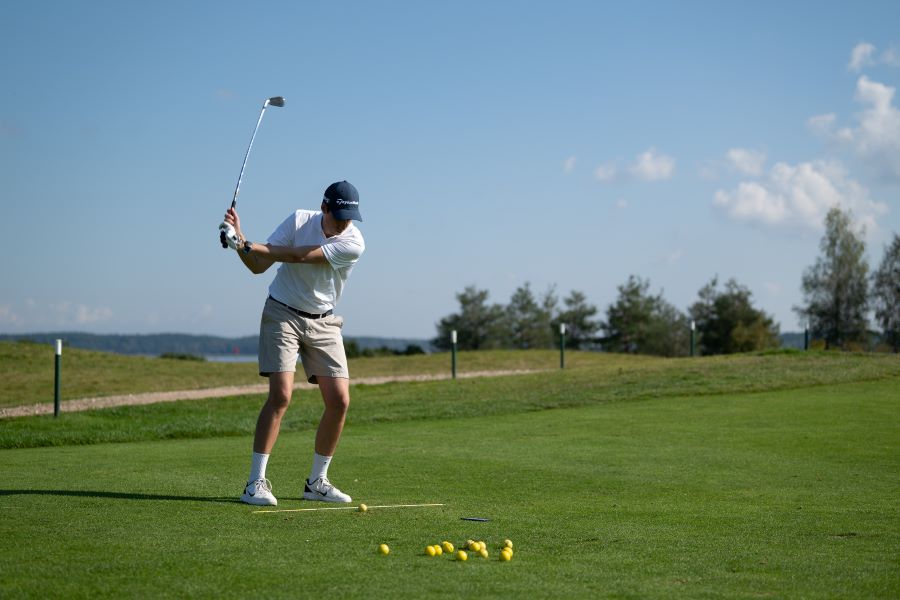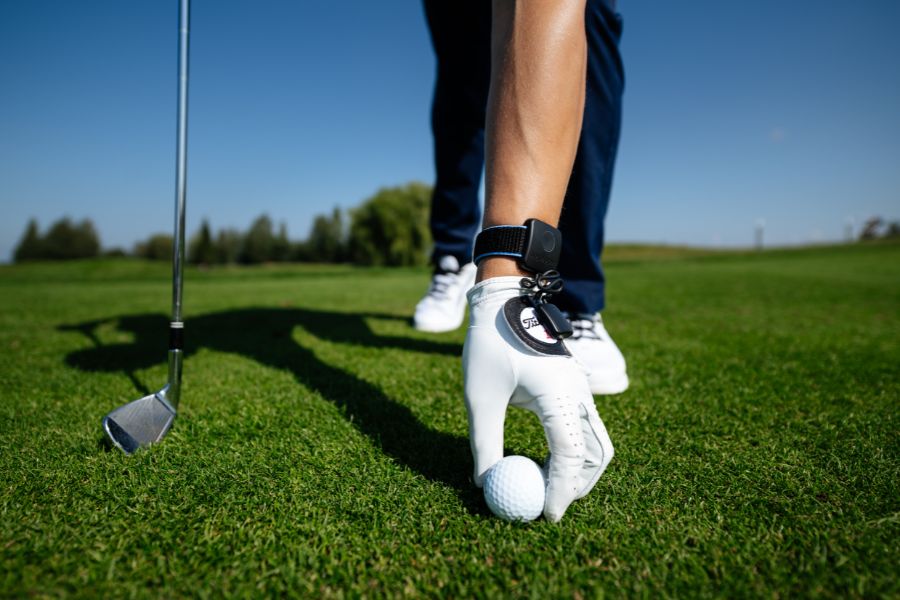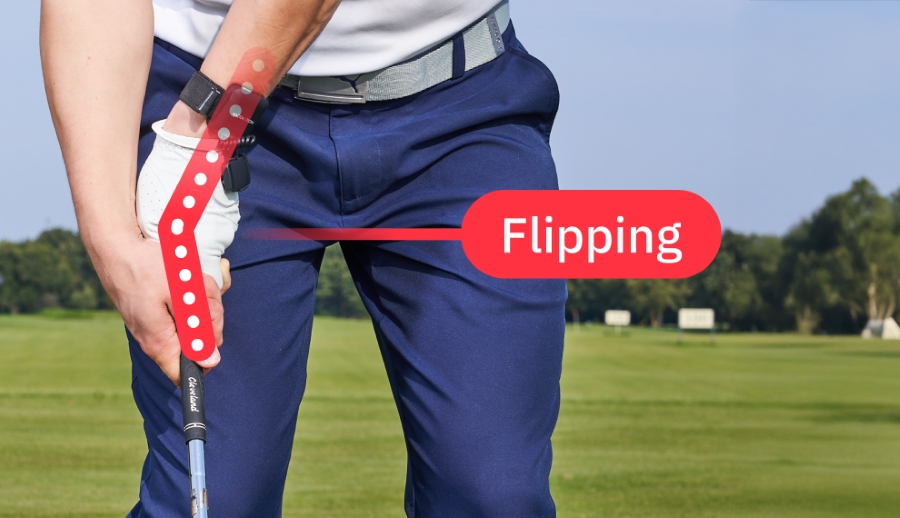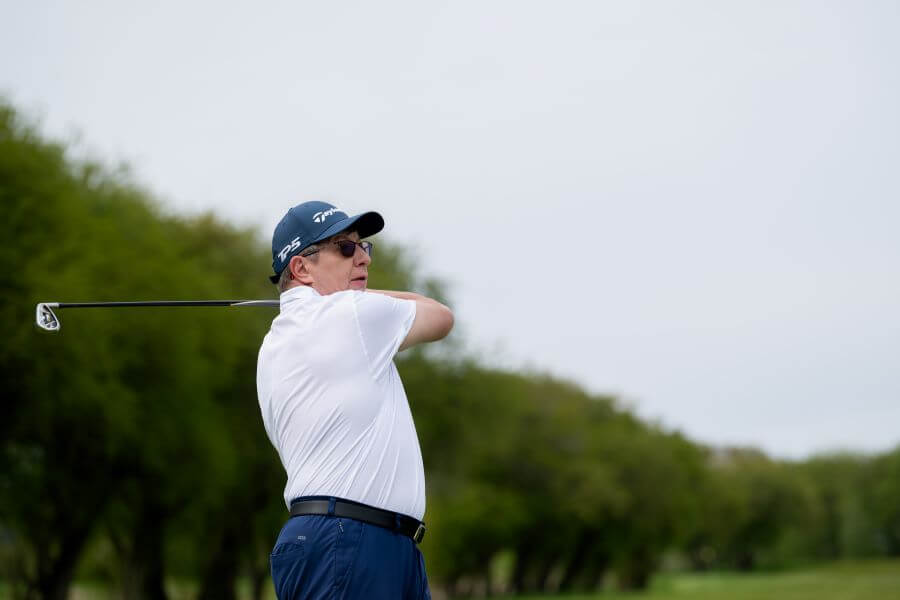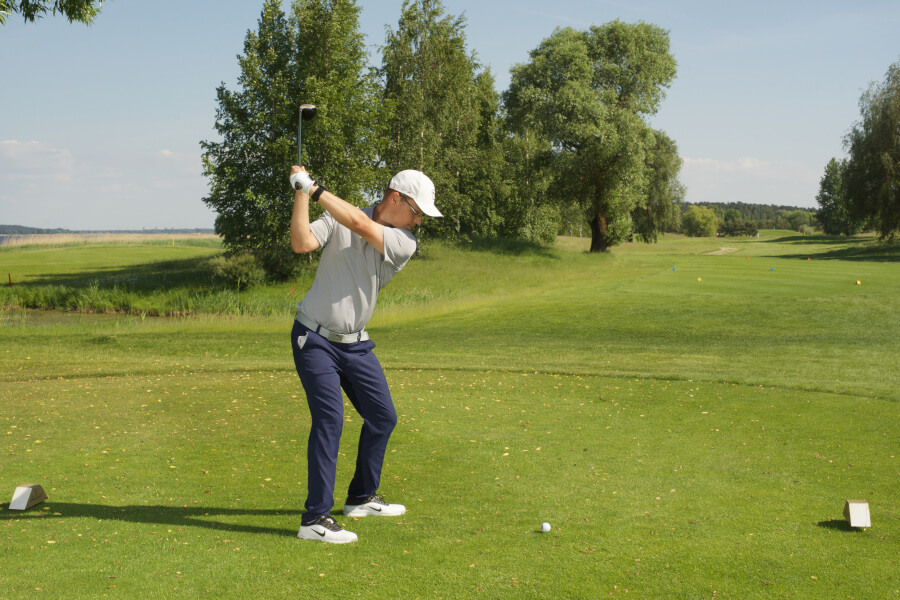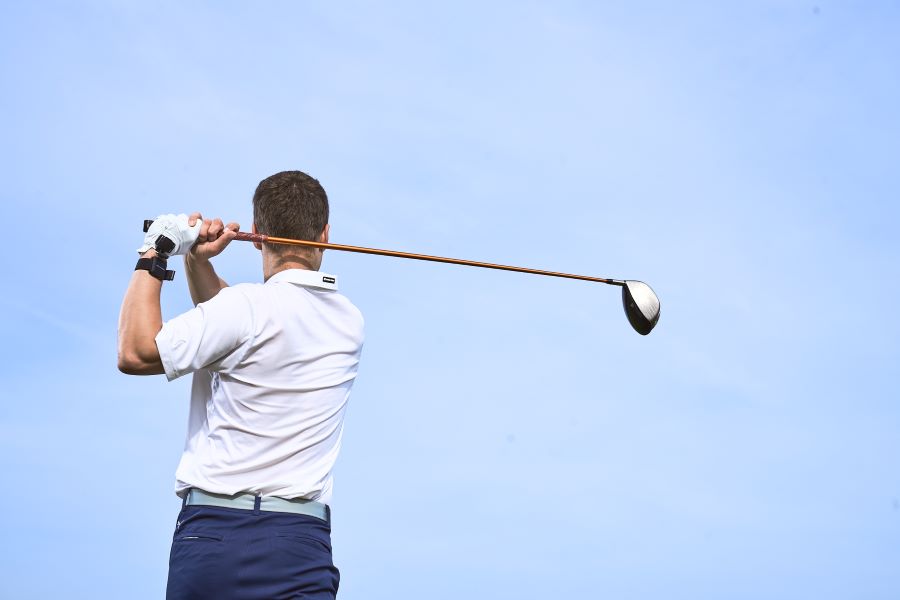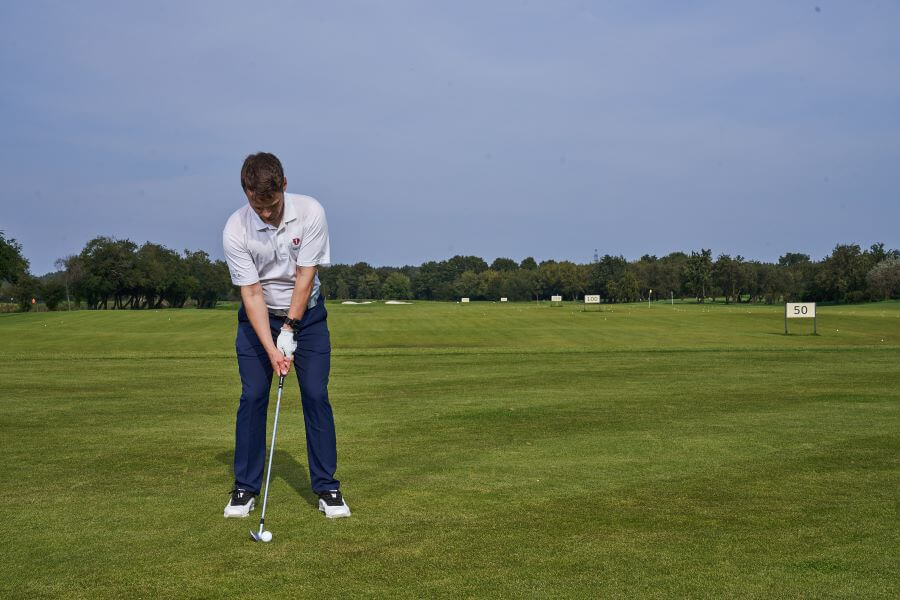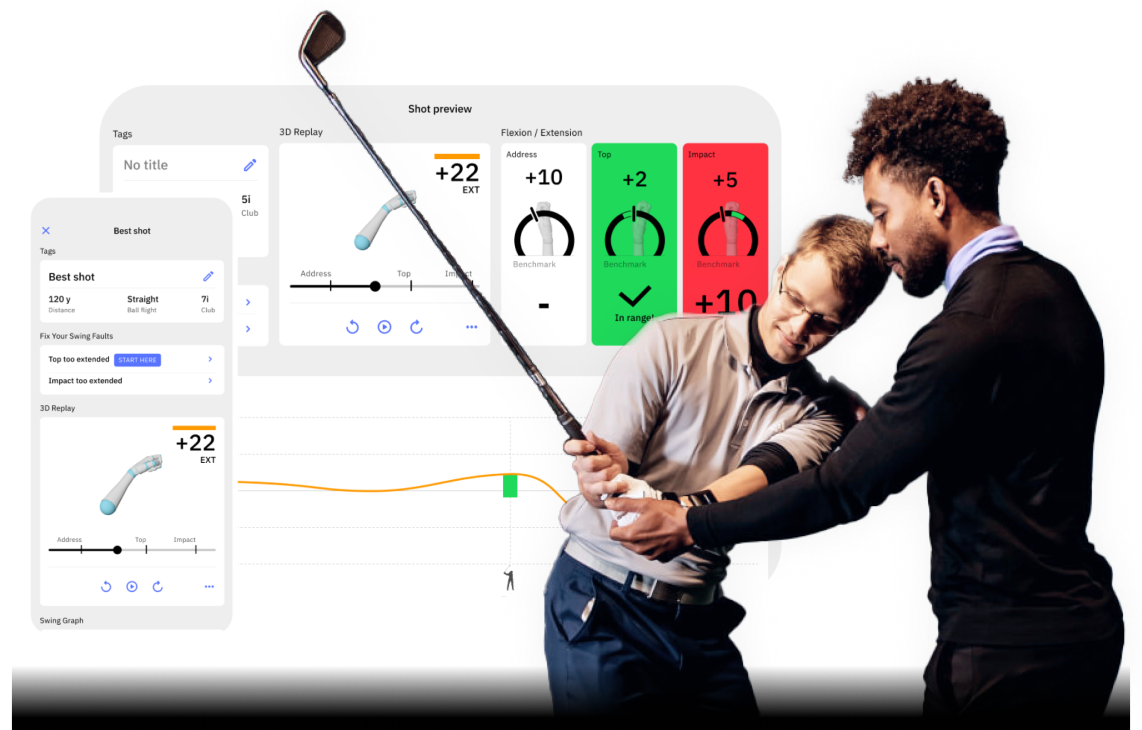Stop Late Release in Golf: 6 Tips for Better Impact & Power
A late release is when your wrists stay hinged for too long. The clubhead never truly catches up through impact.
If you ever felt like you were trying to hold the lag in your swing, but the compression of your shots is just not there, you probably struggle with the late release.
The late release is not the same as flipping; it is almost the opposite, and to fix it, you should work on drills, incorporating feedback into your practice, and repetition.
Here are some proven tips and drills to help you stop the late release in your golf swing.
Key Takeaways
If you need a quick refresher on what late release is and the basic steps to fix it, you’ll find it here. Keep reading for a more detailed analysis of late release and how to fix it.
- Late release = too much lag held too long. When the wrists stay hinged past impact, the shaft leans forward, the face stays open, and shots launch weak, low, and often right.
- Root causes of late release include: Extra grip tension, an open clubface in the downswing, poor weight shift, or “over-saving” lag.
- Train the fix with simple feels. Drills like Hit-Hard–Stop-Quick, the Motorcycle move, feet-together swings, and ball-first contact teach a timely unhinge and square face.
- Measure to speed progress. Using HackMotion for real-time wrist feedback ensures each drill keeps your lead wrist in the right flex/hinge window so the release happens out in front of the ball.
Contents
- Main Causes of a Late Release
- How to Fix a Late Release
- The “Hit Hard, Stop Quick” Drill To Improve Impact Position
- Casting Drill to Keep Wrist Angles
- Try The Motorcycle Drill To Square the Face
- Get the Downswing Sequence Correct
- Increase Clubhead Speed with a Timely Release
- Setup and “Hitting Down” Slightly
- Release Drill to Practice on Short Swings
- Early Extension Check
Main Causes of a Late Release
Before we dive into the best ways to fix your late release, here’s a quick look at the most common causes of late release in golf:
- Over-Accumulated Lag: Attempting to “keep the angle” too long in the downswing makes it physically impossible to square the clubhead on time.
- Excessive Grip Pressure and Tension: Tight arms and forearms freeze the wrists, so the club can’t flow into impact naturally.
- Open Clubface in the Downswing: If the face points skyward approaching impact, your brain will delay releasing to avoid a dead-right push.
- Poor Weight Shift: Hanging back on the trail foot prevents the club from releasing forward; the handle outruns the head.
- Forearm Rotation Mismatch: Hips and shoulders might spin ahead, while the arms lag behind, so the shaft remains angled too long.
Each issue forces your wrists to “hold on” instead of letting the clubhead release out in front of the golf ball.
How to Fix a Late Release
Below are seven practical fixes for a late release. Work your way through these drills and exercises to see if you find a way to time and feel this release correctly.
The “Hit Hard, Stop Quick” Drill To Improve Impact Position
Releasing the club late creates too much action just after the golf ball, which can lead to loss of consistency and accuracy.
The Hit Hard Stop Quick Drill trains forward shaft lean and ensures that you utilize your full power and accuracy as you strike the ball.
- Video timestamp – 3:00 – 4:20
Hit Hard, Stop Quick Drill – Step by Step:
- Half Swings: Take small, controlled half swings to start.
- Accelerate Through Impact: Swing through the ball firmly, then stop the club immediately after contact.
- Lead Arm & Shaft in Line: Focus on keeping your lead arm and the club shaft in a straight line through impact—no flip, no excessive hold-off.
- Use HackMotion for Feedback: Wear HackMotion to check that your lead wrist stays flexed or neutral through impact for proper control and compression.
Casting Drill to Keep Wrist Angles
The Casting Drill is all about helping golfers maintain their lag through impact. However, for those that release late, the lag is maintained for too long.
Since you are good at maintaining lag in your swing, use this casting drill to help you learn when to release that lag and strike the ball with the proper window for unhinging.
Fix Your Casting with HackMotion
Train to fix casting by generating power with your core and lower body.
With the Casting Drill being part of the HackMotion app you can work on it in real time if you choose.
HackMotion Release Timing Drill – Step by Step:
- Backswing Wrist Check: At the top of your backswing, confirm a comfortable wrist hinge. Use HackMotion to ensure you’re not overly extended or too flat.
- Slow Transition: Begin your downswing slowly, feeling like you retain the wrist hinge without exaggerating it.
- Monitor Release Timing: If HackMotion vibrates or your data shows you’re losing wrist hinge instantly, you’re likely casting early. If the face stays too open near impact, you may be a late releaser.
- Find the Middle Ground: Use HackMotion’s green target zones to guide your wrist angles through the transition and impact, aiming for efficient, well-timed release patterns.
Try The Motorcycle Drill To Square the Face
The Motorcycle Move is another great drill that can help stop the late release in your golf swing.
One thing to remember here is that a square clubface early in the downswing frees you to release the club on time.
You don’t have to hold the lag forever just to square the face, and you can confidently get the club through the ball.
This is another drill that can be worked on in real time in the HackMotion app.
The Motorcycle Drill – Step by Step:
- Rev the Throttle: From the top of the backswing, feel like you’re twisting both wrists like revving a motorcycle. Lead wrist moves slightly toward flexion, trail wrist toward extension.
- Check Wrist Angles: Use HackMotion to track that your lead wrist is no longer overly extended. A flatter wrist helps keep the clubface square.
- Rotate Through: Keep turning your body through impact, allowing the club to unwind naturally with the face in a strong position.
- Rehearse Slowly: Start with slow-motion rehearsals, then gradually speed up while maintaining the same wrist motion.
Get the Downswing Sequence Correct
A correct downswing will also help ensure you can release the club on time. All golfers should follow a specific chain of command in the downswing.
This includes the lower body turning first, then the torso, and then the arms and hands following.
If you get that sequence right, you’ll prevent casting and holding on to the angle too long. Visualize starting the downswing from the ground up.
If your hips and chest outrun the arms, the face may stay open.
Increase Clubhead Speed with a Timely Release
Have you ever hit a shot where you felt like you were able to throw the club head at the ball. A properly timed release helps to boost speed and control, and gives you that feeling of throwing the clubhead.
To work on this, try swinging with your feet together. You’ll feel the arms and wrists release rather than lock up through impact.
Try doing this and feeling a quick stop just after the ball if you want to use your timely release to generate more power.
Play around with the amount of forearm rotation you have in your downswing. For a late release, you may need to increase the forearm rotation to hit the ball cleanly and at the correct time.
Setup and “Hitting Down” Slightly
Simple fundamentals can fix a surprising number of late-release issues. If you can get your setup correct, releasing the club at the right time becomes easier.
- Ball Position: A bit farther back (for irons) ensures you catch the ball first, not stuck behind.
- Grip Tension: If your release is late because you have been holding the club too tight as it swings through impact, it may be time
- Weight Forward: Feel 60 %+ of pressure in your lead foot at address.
- Brush the Front Half of the Tee: Train a slight downward strike with irons, helping the handle lead the head at impact, but not excessively.
Release Drill to Practice on Short Swings
The release drill is a great practice drill for golfers who struggle with their impact position.
With this drill, you train your release on a short swing before adding more power and length to the golf swing.
If your release from club parallel to club parallel is perfect, you won’t have to worry when you take a full swing.
Release Drill – Step by Step:
- Set Up: Take your normal address position with a mid-iron.
- Half Swing to Impact: Make a slow backswing to waist height, then swing down focusing on rotating your body through impact.
- Passive Hands: Feel like your hands and arms stay soft — the body rotation should square the clubface, not an aggressive hand flip.
- Hold the Finish: Finish with your chest facing the target and the club extended down the target line.
- Use HackMotion for Feedback: Wear HackMotion to check that your lead wrist stays flat or slightly flexed through impact without overextending in the release.
Early Extension Check
Late release sometimes pairs with early extension (standing up through impact). If you suspect that’s another piece of your puzzle, see our full guide on How to Stop Early Extension.
Staying in posture helps both your face control and your release timing.
Final thoughts
The late release costs you power and accuracy, but most importantly, it significantly impacts the consistency with which you play golf and strike the ball.
If you can square your clubface and get your swing sequence in place, the release should start to follow naturally. Use HackMotion to practice real-time drills and ensure your release is timed correctly.
